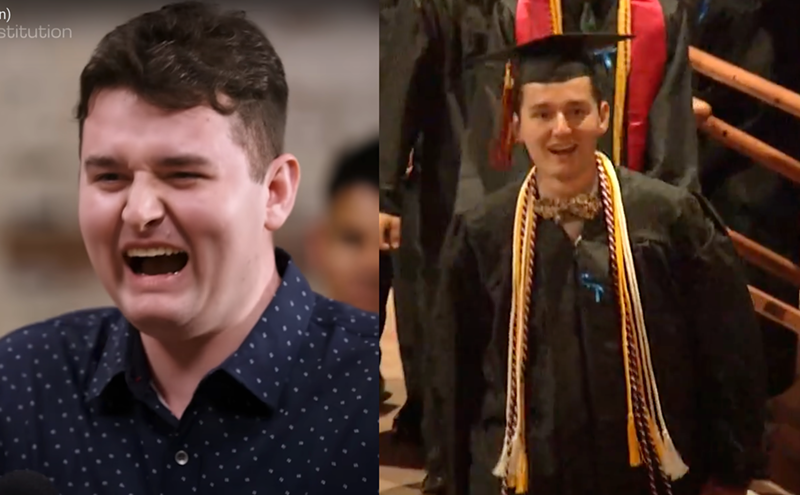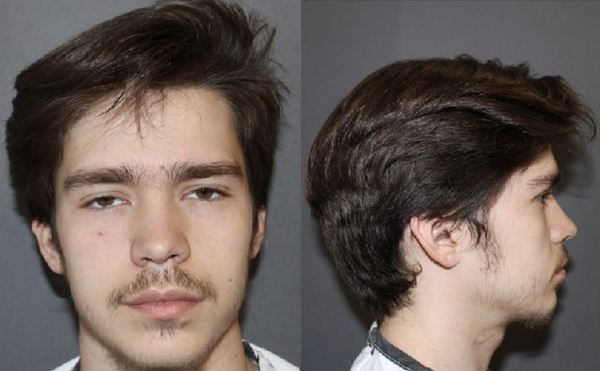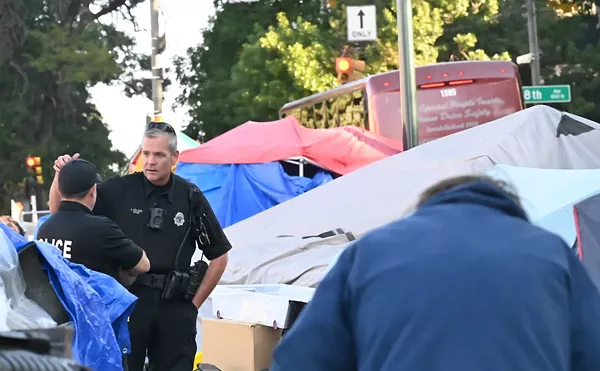As detailed here, Marshall, originally arrested for trespassing, slumped to the floor of a Denver jail corridor after being pushed by a deputy in an action that was forceful but not overtly aggressive. The deputies responded by holding Marshall down (even though he didn't appear to be struggling) before transitioning into an unsuccessful attempt to revive him. An autopsy determined that, in all likelihood, he choked to death on his own vomit.
Then-Denver District Attorney Mitch Morrissey ultimately decided not to press criminal charges against the deputies involved in the incident. But more than a year later, as originally reported by CBS4, seven of the law-enforcers have been informed that they've been targeted with potential disciplinary action in regard to Marshall's death.
Daelene Mix, communications director for the Department of Public Safety, provided Westword with the following statement about the developments:
Seven subject officers each received contemplation of discipline letters from the Denver Sheriff Department's Conduct Review Office that set out the policies that are under review to determine whether rules were violated as a result of their individual actions in the Michael Marshall case. Pre-disciplinary meetings have also been scheduled for each subject deputy, which adheres to a constitutional due process requirement that affords the officers an opportunity to respond to the contemplation of discipline letters and to provide any additional information they want considered before a final disciplinary review occurs. After the pre-disciplinary meetings are held, the Executive Director of Safety's office has 21 days within which to make final decisions.Mix declined to reveal a schedule for the pre-disciplinary meetings.
Continue for our previous coverage, which details the video and shares Morrissey's rationale for eschewing criminal charges against the deputies.
Original post, 5:49 a.m. January 22, 2016: At this point, no one should be surprised that Denver District Attorney Mitch Morrissey has decided not to criminally prosecute deputies for the jailhouse death of Michael Lee Marshall, a mentally ill inmate, last November.
Morrissey has been so reluctant to charge law enforcers in such circumstances that his critics may wonder if he'd move forward in a case featuring a cop captured on cell phone video saying, "I am going to murder this man with malice aforethought" and then laughing maniacally as he carried out the deed.
But the video of Marshall's awful final moments — footage the Colorado Independent filed suit to obtain — isn't the sort of violent confrontation that we've seen too many times in cases like these.
Indeed, the vast majority of the ten-minute-plus clip, which includes views of the scene from two different angles, represents an agonizingly slow build to its horrible ending. Much of the video consists of deputies holding Marshall down (even though he doesn't appear to be struggling) and then attempting to bring him back to life.
According to Morrissey's decision letter, on view below in its entirety, Marshall was arrested for trespassing on November 7, 2015, after which he was placed in the Denver Detention Center's 4D pod, described as a "special management unit on the fourth floor."
Prior to his jailing, Marshall had reportedly refused to take medicine prescribed to fight the effects of his schizophrenia, and he'd had six police contacts over a 48-hour period. During 911 calls, he's said to have been "rambling" and engaged in "ranting."
On November 11, Marshall was allowed free time out of his cell, but when he "was observed behaving in a strange and erratic manner" and approaching another inmate aggressively, deputies intervened and took him to an area dubbed a sally port, with a bench on one side of a long hallway.
It's at this point the video begins.
Here's a look at Marshall sitting on the bench as a deputy looks on.
Next, Marshall rises and moves toward the deputy, who directs him to sit back down.
When Marshall doesn't follow this order, the deputy puts his hand on Marshall's chest and pushes him toward the wall.
In the video, however, this movement, while forceful, isn't sudden or notably aggressive.
Nonetheless, Marshall slumps against the wall and then slides to the floor.
Three deputies rush toward him and hold him down, even though Marshall doesn't seem to be struggling in any overt way.
This goes on for several minutes, at which point the deputies move Marshall and apparently try to revive him.
The view of the scene then switches to show the deputies, joined by other emergency personnel gathered around Marshall's prone figure.
An attempt at CPR is made....
...but Marshall fails to respond, causing those present to step back and look down at him, as seen in the image at the top of this post.
The video ends with more emergency measures being taken, with an IV bag visible in the frame.
But these efforts were clearly too little, too late. The Denver coroner's office determined that Marshall likely died by choking on his own vomit.
The death has been ruled a homicide — but Morrissey sees no criminal intent in the actions taken regarding Marshall.
"Based on the evidence in this investigation, I conclude that the physical force exerted against Mr. Marshall by the deputy sheriffs was for the lawful purpose of maintaining order in the jail as allowed by Colorado’s statute, and was applied by the deputies as part of their responsibility to provide safety and security," Morrissey writes in the conclusion of the decision letter. "There is no evidence suggesting any force was used for the purpose of harming Mr. Marshall. It should be remembered that this incident began as an attempt to get help for Mr. Marshall who was behaving erratically and inappropriately. The event that required the deputies to physically control him was not of their choosing and their actions were in response to Mr. Marshall’s behavior. Indeed, their efforts to help him continued through the remarkable twenty minutes of CPR."
Morrissey offers several bullet points that he notes were "pertinent to my evaluation of whether the force applied by the deputies was 'reasonable and appropriate.'"
• The taking of Mr. Marshall to the floor was controlled. No strikes of any kind were delivered to Mr. Marshall. The floor was not used to cause forceful impact to Mr. Marshall.As such, Morrissey allows, "My conclusion is that, despite the unintended and unfortunate result, the evidence would not convince a jury beyond a reasonable doubt that the force applied to Mr. Marshall was either 'unreasonable' or 'inappropriate.'
• The deputies noted that the pressure used to control Mr. Marshall was applied to his hands, arms, legs, lower back, and to the back side of his shoulders and scapula areas in a manner that did not interfere with Mr. Marshall’s breathing. The nurses confirm this. They said that Mr. Marshall was breathing. Dr. Frank supports this also. She did not find “compressive asphyxia” or pressure on Mr. Marshall’s thorax to be a factor.
• The deputies described that Mr. Marshall occasionally stopped struggling, so they eased the pressure they were applying. However, when they did so, Mr. Marshall would resume struggling, causing the deputies to again apply pressure to control him. The video supports these statements that pressure was occasionally lessened and released on Mr. Marshall. The nurses’ statements support that Mr. Marshall was struggling.
• When Mr. Marshall vomited, the deputies tried to roll Mr. Marshall onto his side in an effort to prevent him from aspirating. Nurse Ajao confirms this.
• During the time on the floor of the sally port, Mr. Marshall was able to move his head. He was not held face down. Deputies and nurses described Mr. Marshall having his head turned to the side and moving his head from side to side.
Continue to see the video, obtained by 7News, followed by Morrissey's decision letter.
Michael Lee Marshall Decision Statement












